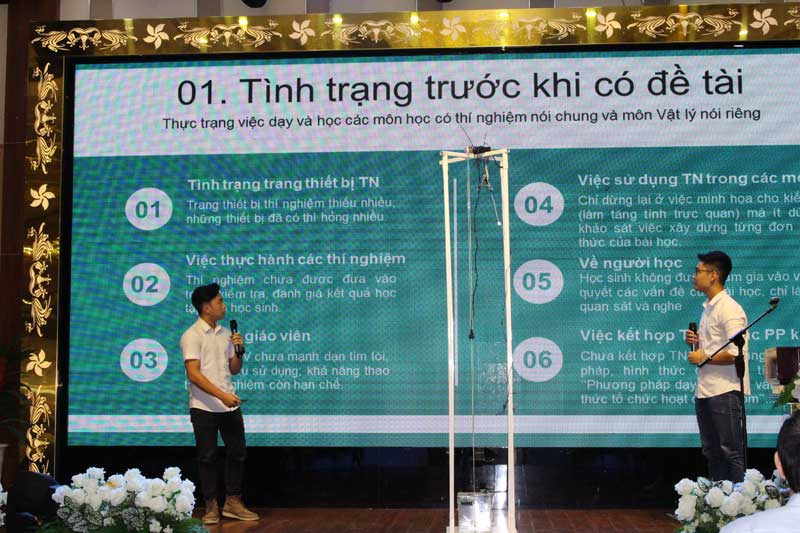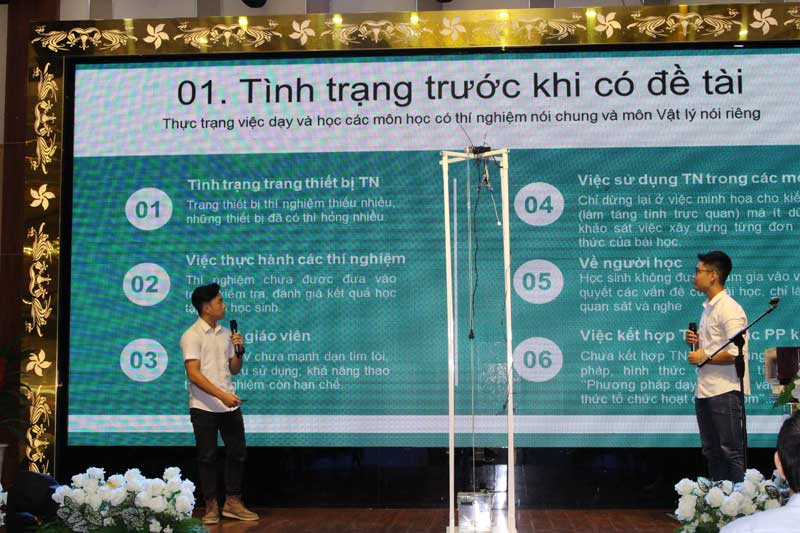



The solution won the second prize for the
14th Provincial Youth Creative Contest
The 14th Provincial Youth Creative Contest
received 71 participating solutions. There were solutions attending in all five
contest areas: 25 solutions of environmental protection and economic
development; 27 solutions of home appliances and children's toys; 7 solutions
of computer software; 7 solutions of learning tools; 5 solutions of
environmentally friendly products. The result was as follow: there were 32
winning solutions, including 2 second prizes, 5 third prizes and 25 consolation
prizes. Some schools usually have solutions such as: Dong Chum Boarding Ethnic
Minority High School and Secondary School (Da Bac), Lien Son Secondary School
(Luong Son), Hoang Van Thu Gifted High School.
The Provincial Youth Creative Contest have
attracted students and pupils from the city to remote areas. Especially, some
difficult districts such as Da Bac, Mai Chau attracted many solutions to
attend. Da Bac district had 11 solutions, Mai Chau district had 9 solutions.
Mr. Tran Bao Toan, the Chairman of the
Provincial Science and Technology Association Union, said: "The 14th
Provincial Youth Creative Contest is a healthy playground, attracting a large
number of solutions. The quality of scientific solutions is better than in
previous years. In particular, 11/11 districts and cities have solutions to
contest. This result is due to the direct leadership of the provincial People's
Committee, the close coordination and direction of the departments, sectors as
members of the Standing Committee of the contest through the document
launching, urging and grading of emulation for units in the industry. Some
districts and cities have encouraged and provided material and spiritual
support for the contestants to participate the contest with high quality, such
as Cao Phong, Luong Son districts, Hoa Binh city.